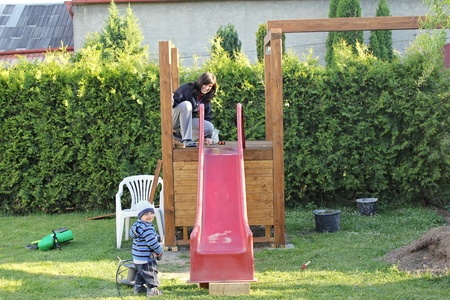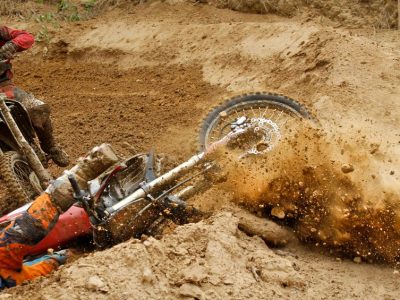

Home Playground Safety Checklist
There is little that children enjoy more than a home playground. Sadly though, in the time that it takes you to read this blog post, a child will be severely injured and admitted to an emergency room as a result of a playground-related accident. Every year there are over 200,000 injuries and approximately 15 child deaths due to accidents on play equipment.
An interview with Phi Viet Le, a Certified Playground Safety Inspector (CPSI), produces a worthwhile discussion about his safety concerns for home playgrounds:
The most common home playground injuries (about 65 percent) are from falls and equipment failure. Other common home playground injuries are the result of collisions, either with other children or the play structure itself. In some cases a piece of playground equipment is installed or placed improperly and children can end of swinging or sliding into each other. Entrapment of heads, arms, legs or bodies can occur if openings throughout the set are not built to recommended sizing. Incorrect opening size is the most common mistake made by playground manufacturers. Any opening should be designed to less than 3½ inches or more than 9 inches.
The safety aspect most missed by parents is having a safety surfacing under the play set. While safety surfacing may not necessarily prevent injuries, it does minimize the severity of the injuries from a fall. According to Phi Viet Le Rubber mulch is the most highly recommended product for safety surfacing.
Safety checklist to prevent falls from playground towers. Hint: it comes down to having the right size barrier for the appropriate tower height.
- Platforms above 30 inches and up to 48 inches high should be fitted with a guardrail at least 25 inches high.
- Platforms above 48 inches and up to 72 inches high should be fitted with a protective barrier (not a guardrail) at least 27 inches high.
- Platforms over 72 inches high should have a protective barrier at least 33 inches high.
- High platforms should also have an intermediate standing surface where a child can stop ascending and choose another route to descend.
- Guardrails should not have crossbars or toeholds that would encourage climbing. Any openings should be smaller than 3 ½ inches wide.
Top 10 Home Playground Safety Tips
- Install and maintain a shock-absorbing surface around the play structure. Place at least nine inches of wood chips, mulch or shredded rubber for play equipment up to seven feet high. If sand or pea gravel is used, use at least a nine-inch layer for play equipment up to five feet high. Surfacing mats made of safety-tested rubber or rubber-like materials can also be used.
- Install protective surfacing at least six feet in all directions from play equipment. For swings, the protective surfacing should extend in back and front to twice the height of the suspending bar.
- Never attach or allow children to attach ropes, jump ropes, clotheslines or pet leashes to playground equipment; they are a strangulation hazard.
- Before your children play look for hardware like protruding bolt ends, which can be hazardous.
- Check for sharp points or edges in equipment.
- Check for spaces that could entrap children, such as openings in guardrails or between ladder rungs; these spaces should measure less than 3.5 inches or more than 9 inches.
- Make sure platforms and ramps have guardrails to prevent falls.
- Remove tripping hazards like exposed concrete footings, tree stumps and rocks.
- Regularly check play equipment and surfacing to make sure they are in good condition.
- Supervise children on play equipment to make sure they are safe.
If you or a loved one were injured in an accident, you have enough to deal with. Let an experienced accident attorney fight for the full compensation that you deserve. It is not uncommon to receive a settlement from the insurance company that is five to ten times bigger with the help of a lawyer. Call the caring accident attorneys at Tario & Associates, P.S. in Bellingham, WA today for a FREE consultation! We have been representing residents of Whatcom County, Skagit County, Island County and Snohomish County since 1979. You will pay nothing up front and no attorney fees at all unless we recover damages for you!




